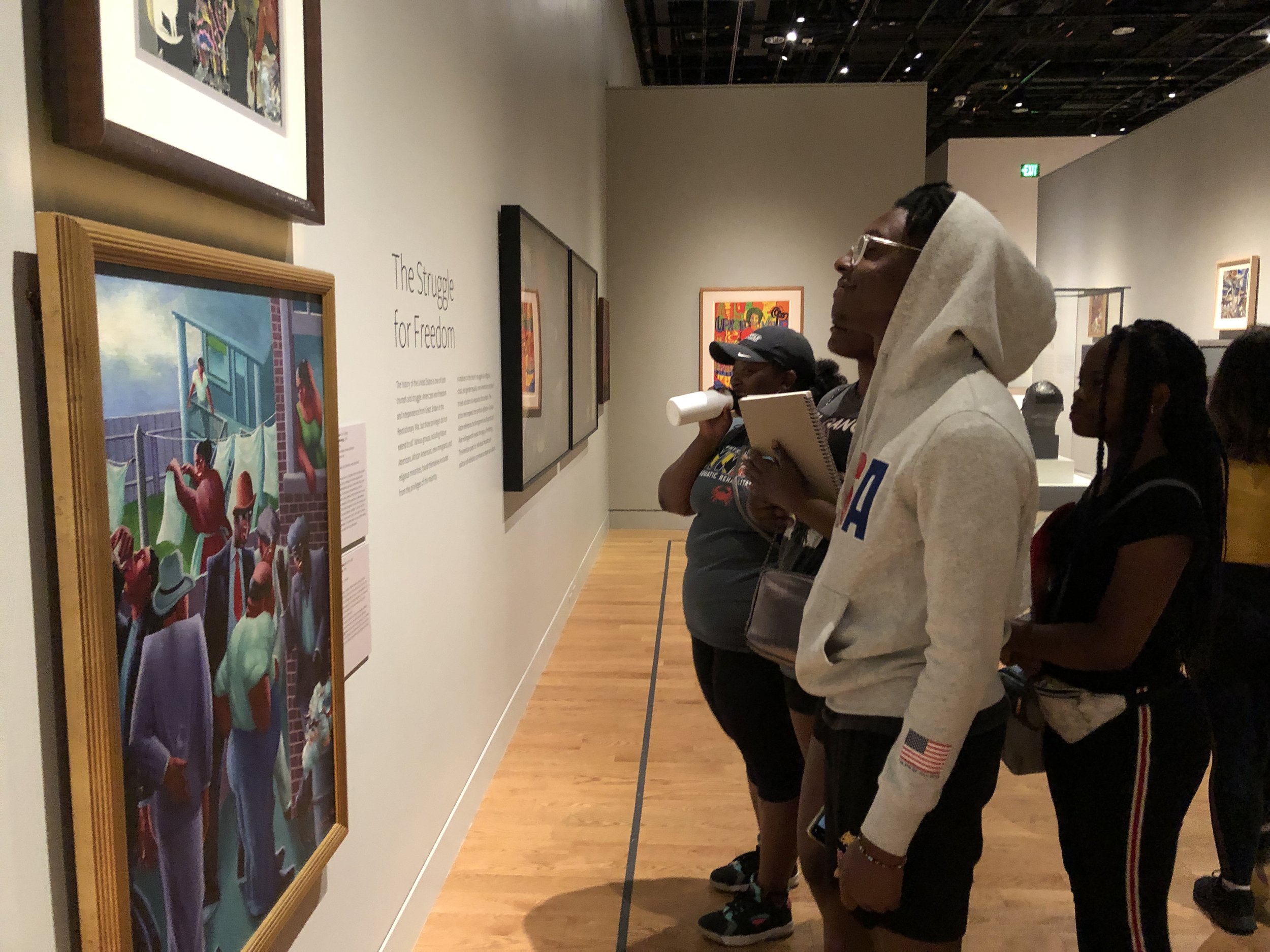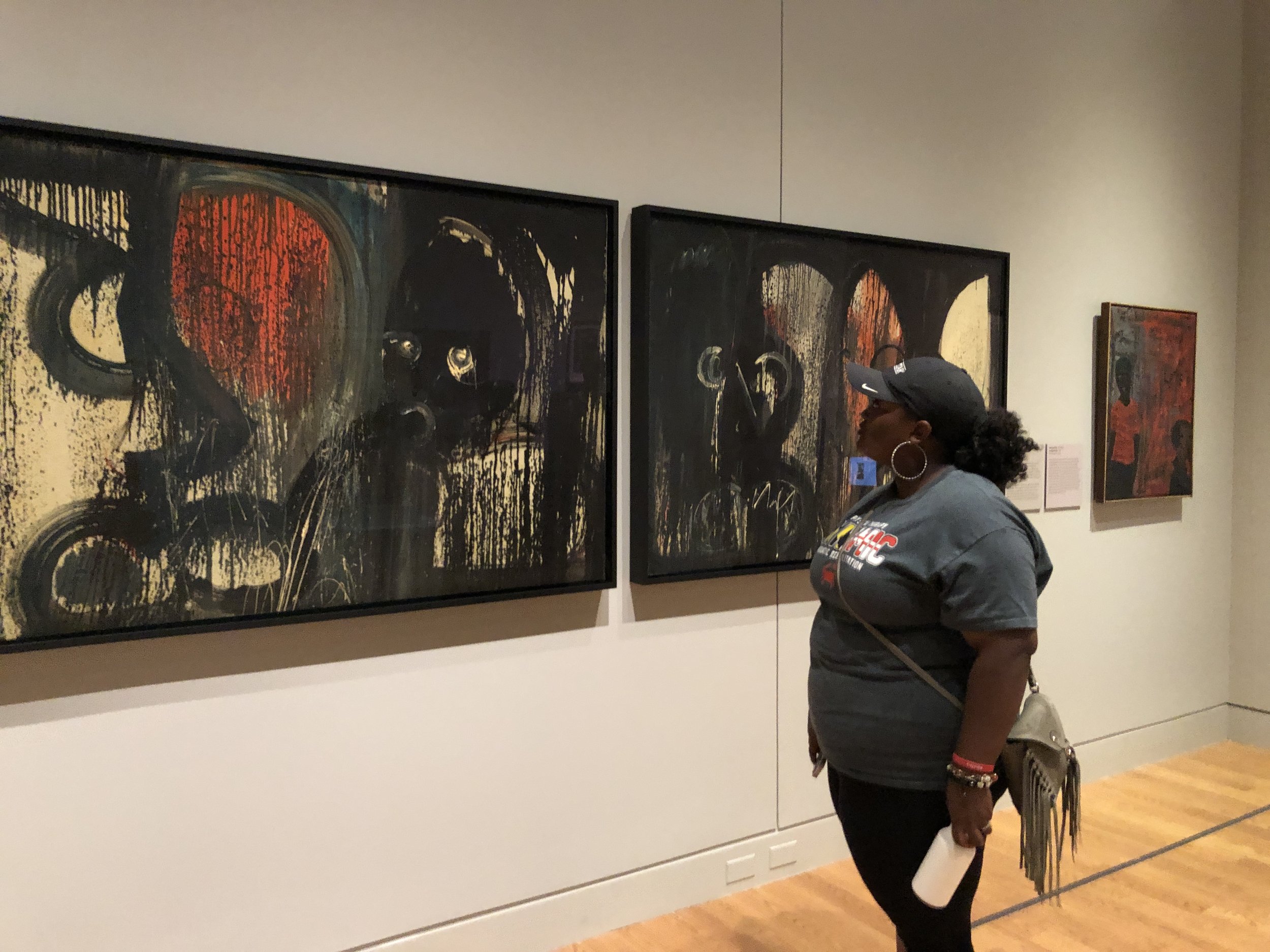Field Trip to the National Museum of African American History and Culture
On July 10, 2019 our entire staff and young people field tripped to the National Museum of African American History and Culture (NMAAHC) in Washington, D.C.
We began at the bottom most level, working our way up through the history galleries: C3. Slavery and Freedom 1400-1877 ; C2. Defending Freedom, Defining Freedom: The Era of Segregation 1876-1968; C1. A Changing America: 1968 and Beyond, and the Contemplation Court. After Lunch, we then began at the top most level, working our way down the art and cultural galleries: L4. Culture Galleries; L3. Community Galleries; and L2. Explore More!
Our reflection writer, Stephanie Woodrup.
“ Hi, my name is Stephanie Woodrup and I am here to share my experience at the National Museum of African American History and Culture with BYA. I think that the museum was an amazing experience for all of us. The parts that personally impacted me the most were the Emmett Till exhibit and the Black Women Civil Rights exhibit.
The Emmett Till exhibit explains what happened to him and why it happened. He was only a 14-year-old boy and was lynched just because he was black and accused of offending a white woman in her family’s grocery store. To me, the exhibit shows just how disgusted people were with black people and the actions they would take to show that.”
Image courtesy of High Point University’s Educational Leadership and Policy in D.C. 2019 Blog: http://www.highpoint.edu/education/2019/05/21/national-museum-of-african-american-history-and-culture/
“The Black Women Civil Rights exhibit was my other favorite because it explains how women got treated and what they could and couldn’t do in their lives, especially in a male dominated society. I am happy they have this exhibit to honor Black women and recognize them for all the work they did for our history. I also write poetry inspired by the young black women experience in America, and related to this exhibit a lot.
I enjoyed going on the field trip with BYA. I got to go through everything as slow as I wanted to and the staff was very respectful of that.”






